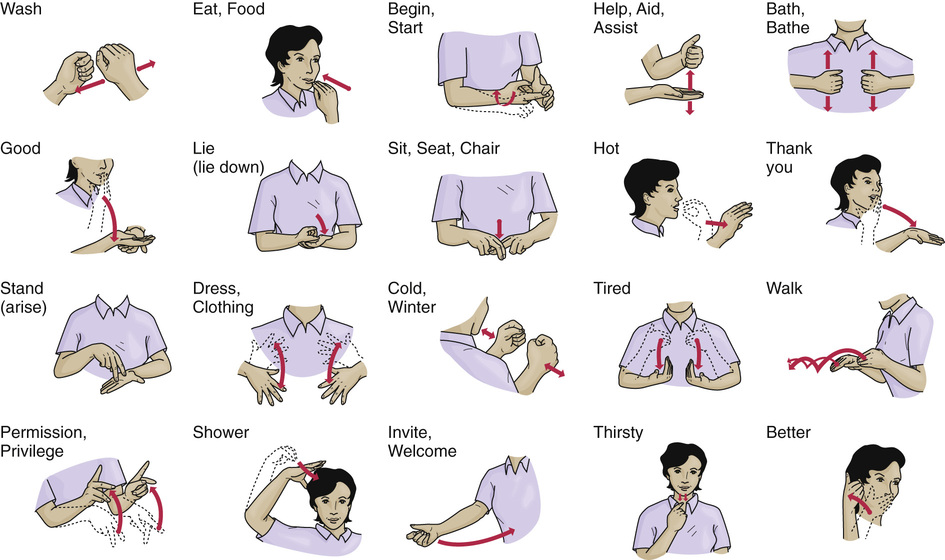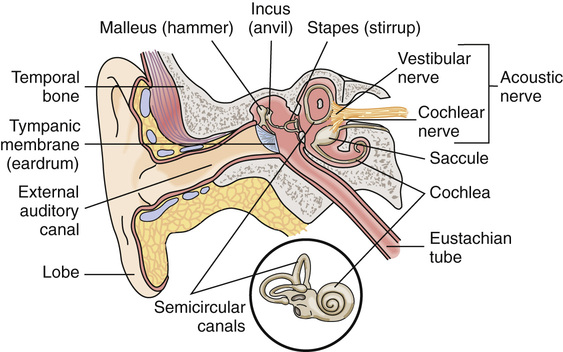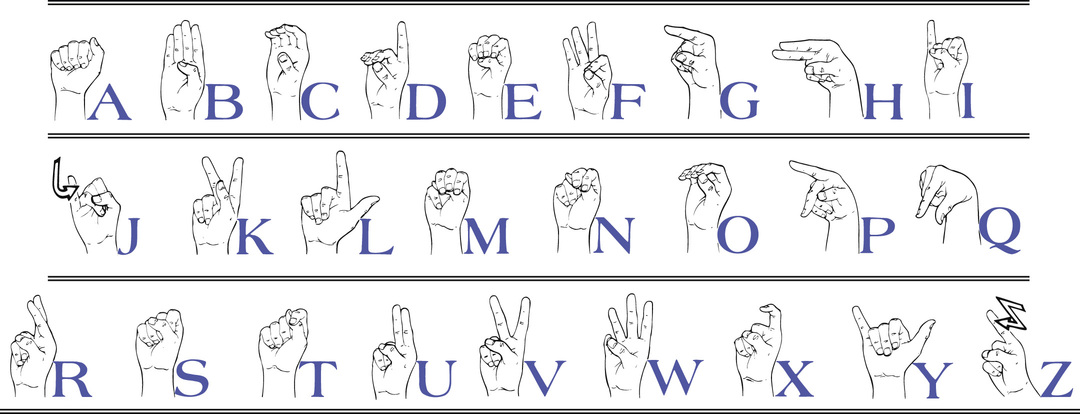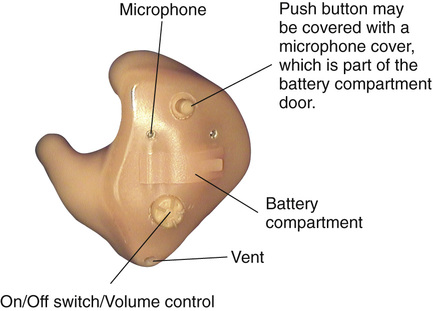Hearing, Speech, and Vision Problems
Objectives
• Define the key terms and key abbreviations in this chapter.
• Describe the common ear disorders.
• Describe how to communicate with persons who have hearing loss.
• Explain the purpose of a hearing aid.
• Describe how to care for hearing aids.
• Describe the common speech disorders.
• Explain how to communicate with persons who have speech disorders.
• Describe the common eye disorders.
• Explain how to assist persons who are visually impaired or blind.
• Explain how to protect an ocular prosthesis from loss or damage.
• Perform the procedure described in this chapter.
• Explain how to promote PRIDE in the person, the family, and yourself.
Key Terms
Hearing, speech, and vision allow communication, learning, and moving about. They are important for self-care, work, most activities, and safety and security needs. For example, you see dark clouds and hear tornado warning sirens. You know to seek shelter. With speech, you alert others.
Hearing, speech, and vision disorders occur in all age-groups. Common causes are birth defects, injuries, infections, diseases, and aging.
Ear Disorders
The ear functions in hearing and balance.
See Body Structure and Function Review: The Ear, p. 676.
Otitis Media
Otitis media is an infection (itis) of the middle (media) ear (ot). It often begins with sore throats, colds, or other respiratory infections that spread to the middle ear. Viruses and bacteria are causes.
Otitis media is acute or chronic. Chronic otitis media can damage the structures needed for hearing. Permanent hearing loss can occur.
Fluid builds up in the ear. Pain (earache), hearing loss, fever, and tinnitus occur. Tinnitus is a ringing, roaring, hissing, or buzzing sound in the ears or head. An untreated infection can travel to the brain and other structures in the head. The doctor orders antibiotics, pain-relief drugs, or drugs to relieve congestion.
See Focus on Children and Older Persons: Otitis Media.
Meniere’s Disease
Meniere’s disease involves the inner ear. Usually 1 ear is affected. Symptoms include:
With Meniere’s disease, fluid builds up in the inner ear. The increased fluid causes swelling and pressure in the inner ear. Symptoms are sudden.
An attack usually involves vertigo, tinnitus, and hearing loss. Vertigo causes whirling and spinning sensations. The dizziness causes severe nausea and vomiting. An episode can last 20 minutes or 2 to 24 hours.
Drugs and a low-salt diet decrease fluid in the inner ear. Smoking, caffeine, and alcohol are avoided.
Safety is needed during vertigo.
Hearing Loss
Hearing loss is not being able to hear the normal range of sounds associated with normal hearing. Losses are mild to deafness, the most severe form. Deafness is hearing loss in which it is impossible for the person to understand speech through hearing alone.
Common in older persons, hearing loss is more common in men than in women. Causes include damage to the outer, middle, or inner ear or to the acoustic nerve. Risk factors include:
• Aging
• Exposure to loud job-related noises, loud music, loud engines, firearms, and so on
• Drugs—antibiotics, too much aspirin
• Reduced blood flow to the ear from high blood pressure, heart and vascular diseases, and diabetes
• Stroke
• Tumors
• Heredity
Temporary hearing loss can occur from earwax (cerumen). Hearing improves after the earwax is removed.
Clear speech, responding to others, safety, and awareness of surroundings require hearing.
See Focus on Communication: Hearing Loss.
See Promoting Safety and Comfort: Hearing Loss.
Effects on the Person.
A person may deny hearing loss or not notice gradual hearing loss. Others may see changes in the person’s behavior or attitude. They may not relate the changes to hearing loss. See Box 42-1 for signs and symptoms of hearing loss.
Psychological and social changes may occur. People may give wrong answers or responses. Therefore they tend to shun social events to avoid embarrassment. Often they feel lonely, bored, and left out. Only parts of conversations are heard. They may become suspicious. They think others are talking about them or are talking softly on purpose. Some control conversations to avoid responding or being labeled “senile” because of poor answers. Straining and working hard to hear can cause fatigue, frustration, and irritability.
Hearing is needed for speech. Pronouncing words and voice volume depend on hearing yourself. Hearing loss may result in slurred speech or pronouncing words wrong. Some people have monotone speech or drop word endings. It may be hard to understand what the person says. Do not assume or pretend that you understand. Serious problems can result. See “Speech Disorders” on p. 681.
See Focus on Children and Older Persons: Effects on the Person.
Communication.
Persons with hearing loss may wear hearing aids or lip-read (speech-read). They watch facial expressions, gestures, and body language. Some people learn American Sign Language (ASL) (Figs. 42-2 and 42-3). ASL uses signs made with the hands and other movements such as facial expressions, gestures, and postures. (Different sign languages are used in different countries. For example, British Sign Language is different from ASL.)

Some people have hearing assistance dogs (hearing dogs). The dog alerts the person to sounds. Phones, doorbells, smoke alarms, alarm clocks, babies’ cries, sirens, and on-coming cars are examples.
Hearing Aids.
Hearing aids fit inside or behind the ear (Fig. 42-4, p. 680). They make sounds louder. They do not correct, restore, or cure hearing problems. Hearing ability does not improve. The person hears better because the device makes sounds louder. Background noise and speech are louder. The measures in Box 42-3, p. 680 apply.






